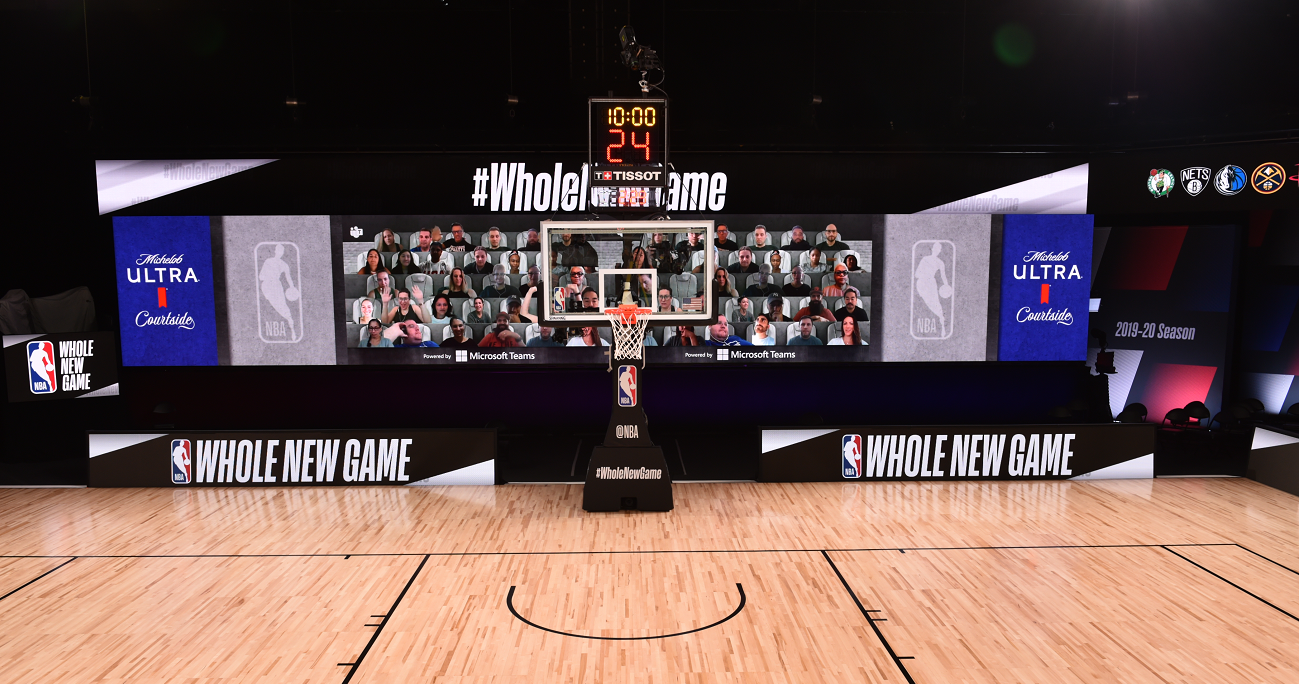If you’re a basketball fan, you may have enjoyed watching the NBA’s reimagined season at the Walt Disney World’s ESPN Wide World of Sports Complex in Orlando.
After COVID-19 forced the league to postpone the season, the NBA got to work to plan what a restart to the season would look like, and a big piece of that was connecting fans to the game and replicating the in-arena media that players, teams and fans have grown to love.
To do that, the NBA needed a heap of AV technology to outfit the complex that was without LED screens and other visual components and professional-grade sound systems up to par with other NBA arenas.
The league called on Fuse Technical Group, it’s longtime partner for the NBA All Star Game, to outfit three basketball courts with an LED and playback system package to replicate the in-game experiences for each of the 22 teams invited to the NBA bubble.
Jumpstarting the NBA’s restart
According to Chris Peterson, the project manager, the company and the NBA went through more than two dozen versions of the final product.
The parties played with the idea of a center-hung LED board similar to most other arenas, but each side wanted to incorporate a virtual fan experience.
“The general look and feel was very similar the whole time around LED and some method of integrating an audience or some sort of participation from players,” Peterson says. “It was really geared towards, ‘How do we make the players feel like they’re playing in an arena?’”
Fuse and the league eventually settled on a 120-foot-long LED wall along the sideline and a 60-foot wall behind each basket along with LED scoreboards.
The list of equipment used for this project is extensive: nearly 500 ROE LED Tiles per court and various quantities of more than 60 different products ranging from media server system components, monitors for production staff, switchers, routers and other networking equipment.
If you watched the games in the NBA bubble, you would have seen hundreds of people – from their torso and up – appear on the LED screens via a partnership between the league and Microsoft Teams.
Read Next: How Video Boards and UC are Helping the NBA Connect with Fans
That was always a must-have for the NBA, Peterson says.
The league gave each team the ability to control who could attend games virtually. The fans could interact digitally with each other throughout the game via Microsoft Team’s Together mode, a new feature that displays each person in the same virtual background.
According to the NBA, more than 30 cameras – including some in robotic form – were installed close to the court for never-before-soon angles in places otherwise not accessible to fans in the arena.
Microphones captured sounds from the floor, like sneaker squeaks, ball bounces and probably some trash talk. DJs and announces in the venue also hep to replicate the sounds and experiences.
A makeshift production staff — for 22 teams
Beginning in early April, Fuse and the NBA began talking about the technology they needed to restart the season, but Fuse had just 10 days to actually install the technology.
Then came the painstaking tasks of programming all of the systems and game elements for each of the 22 teams.
“Ultimately, we had over 15,000 individual video elements that were integrated,” Peterson says.
However, Fuse staff – coupled with four arena producers provided by the NBA — also worked as the makeshift production staff for each game.
“Over Zoom meetings, we got to know each other, reviewed all of the elements, and really had to figure out how to give 22 teams a home feeling,” Peterson says.
The makeshift production team had to essentially learn the home court programming for each team as new video elements were provided by teams each day.
“That first week was pretty much a blur,” Peterson says.
Fuse, which also produces events like the VMA Awards, CMT Awards and other high-profile productions, generally thinks of itself as a live events integrator, but this project was notably different given the length of the production – about three months.
Workstations were more complete than would be typical, with actual desks and monitor stands instead of crates and boxes. Like the rest of the NBA, staff had to quarantine in Orlando and be subject to regular tests.
“We approached this one a little differently than we normally would,” Peterson says.
“We put in the creature comforts. If we could reduce steps, we implemented a piece of software or hardware to reduce our movements and other things like that we normally wouldn’t do when we’re building out a system.”
This article was originally posted on Oct 20, 2020










